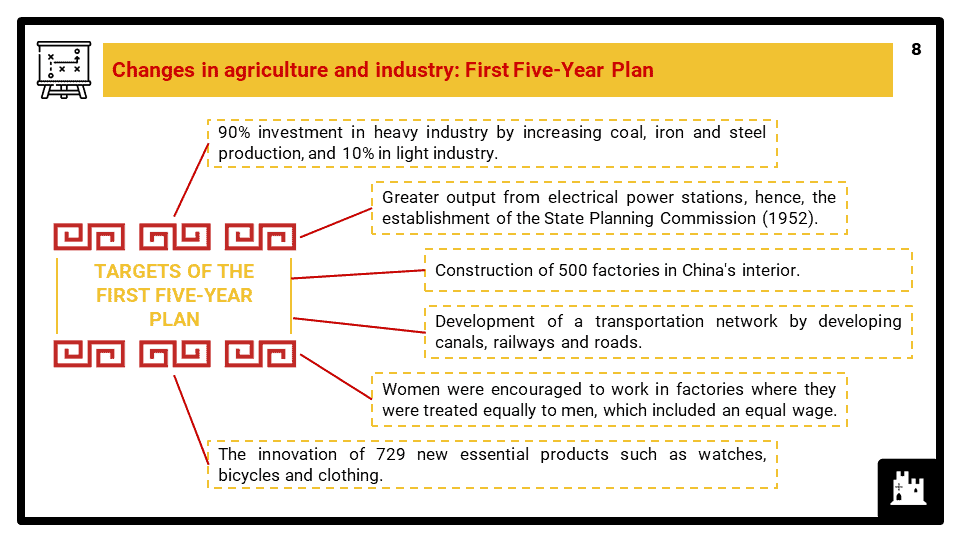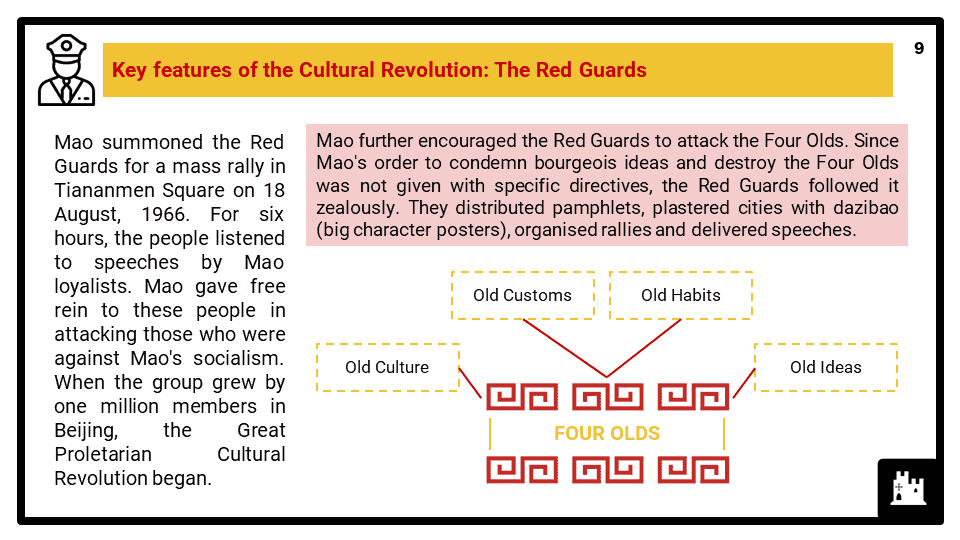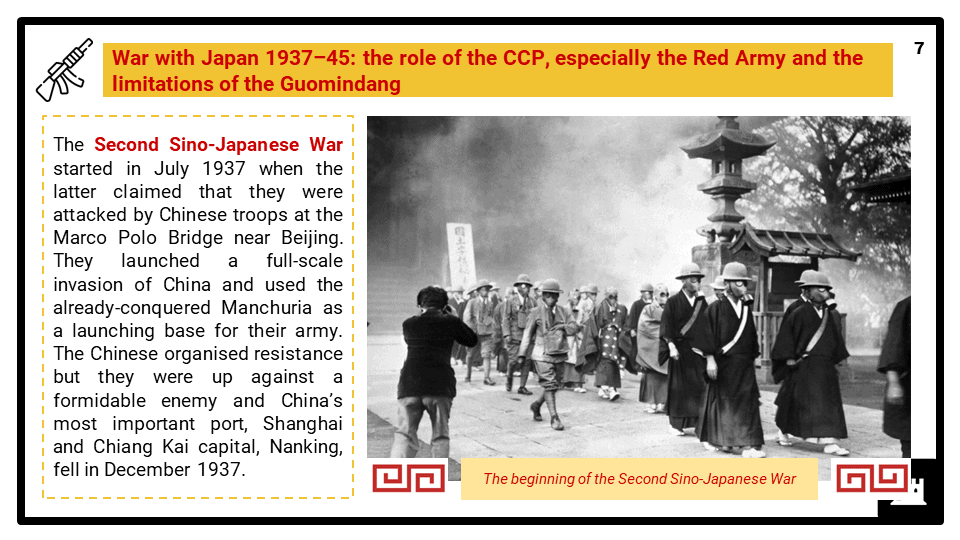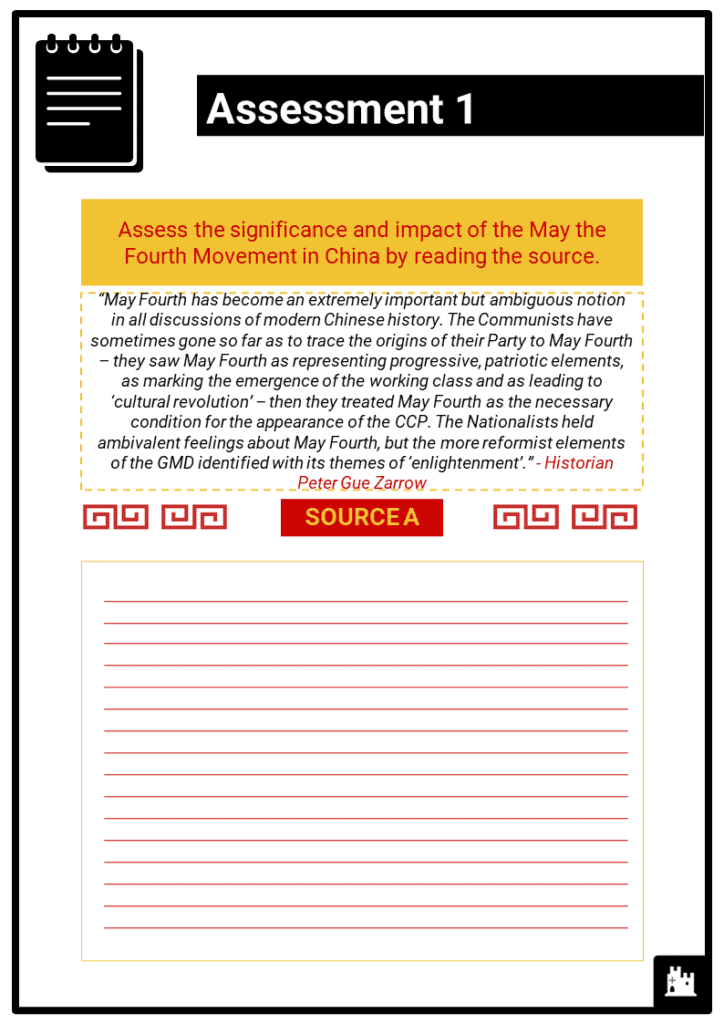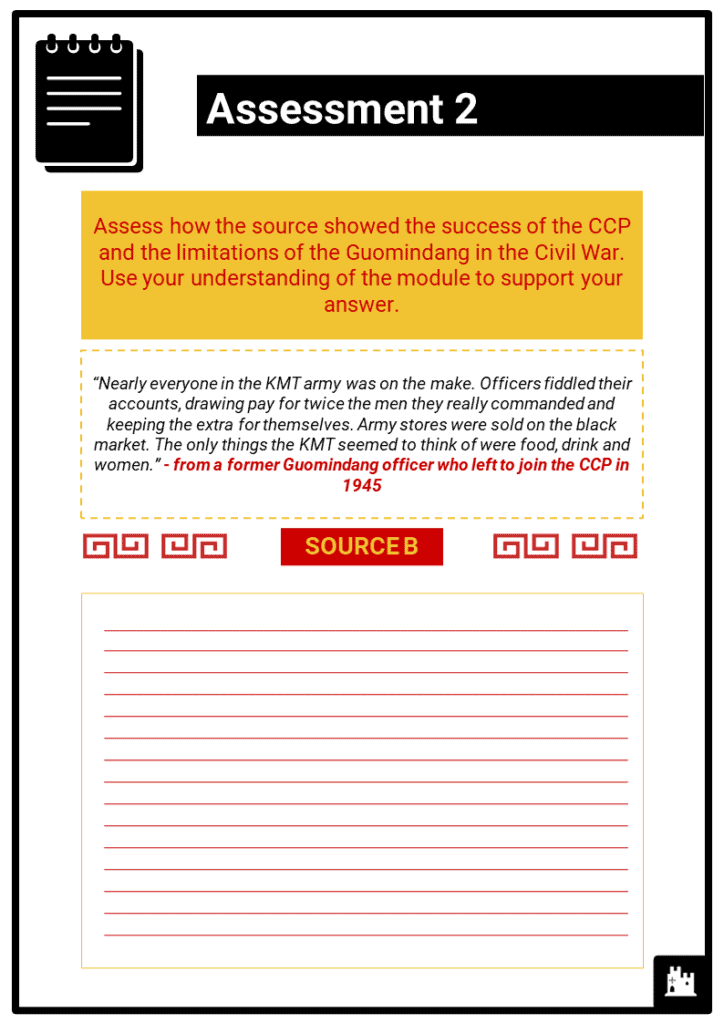Teach any Edexcel IGCSE module B4: China: conflict, crisis and change, 1900–89, no prep needed!
Do you want to save dozens of hours in time? Get your evenings and weekends back? Be fully prepared to teach any Edexcel iGCSE topic B4?
Every Edexcel iGCSE topic B4 is covered, and each module comes complete with:
Paper 2: Breadth Studies, China, conflict, crisis and change, 1900-89
What students need to learn:
- The fall of the Qing, Warlordism and chaos, 1900–34
- The impact of the Boxer Uprising and the late Qing reforms. The causes, events and results of the 1911 Revolution. China under the Warlords. The May the Fourth Movement. Sun Yat-sen, Chiang Kai-shek and the Guomindang. The emergence of the Chinese Communist Party, the United Front and the influence of the Soviet Union. The Northern Expedition and the Shanghai Massacres. The Extermination Campaigns.
- The triumph of Mao and the CCP, 1934–49
- The events and importance of the Long March 1934–35. War with Japan 1937–45 – the role of the CCP, especially the Red Army and the limitations of the Guomindang. Key features of the Civil War 1946–49. The Battle of Huai-Hai. Military, political, economic and social reasons for the success of Mao and the CCP in the Civil War.
- Change under Mao, 1949–63
- Changes in agriculture and industry, including the first Five-year Plan, attack on landlords, the Agrarian Reform Law, cooperatives and collectives. Changes in the role of women. Political changes, including the Thought Reform, the Three- and Five-anti Campaigns. The Hundred Flowers Campaign. The reasons for, key features and effects of the Great Leap Forward. The influence of the Soviet Union on developments in China.
- The Cultural Revolution and its impact, 1965–76
- Mao’s motives for the Cultural Revolution. Key features of the Cultural Revolution. The Red Guards, education and the ‘cult of Mao’. Impact of the Cultural Revolution on China and Mao’s position. The effects of the Sino-Soviet split on the Chinese economy.
- China, 1976–89
- The rise and fall of the ‘Gang of Four’. Changes under Deng in education, birth control, agriculture and industry. Deng’s opposition to political reform. Emergence of privatisation and westernisation. Origins of Democracy Movement (1979). The ‘Democracy Wall’ movement and Wei Jingsheng, support of university students from 1986, features and aims. Reaction of Deng. Tiananmen Square (1989).

